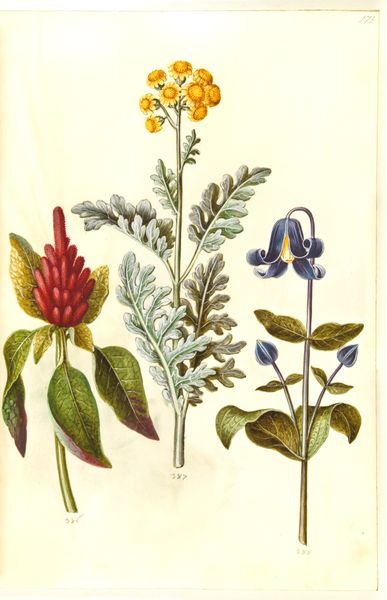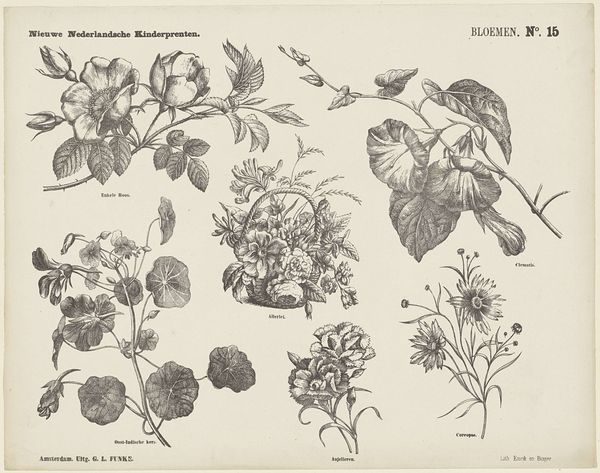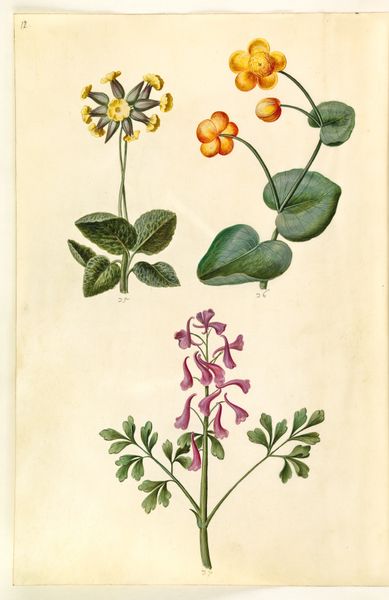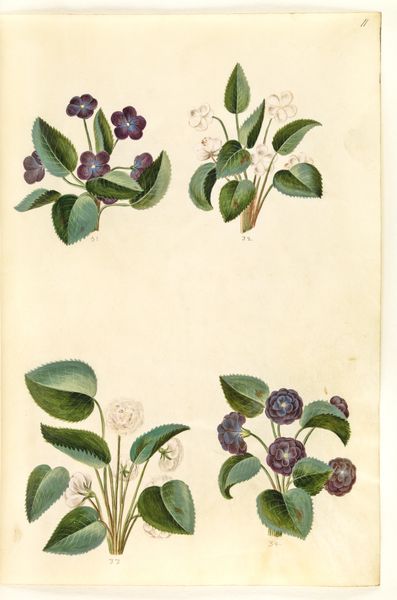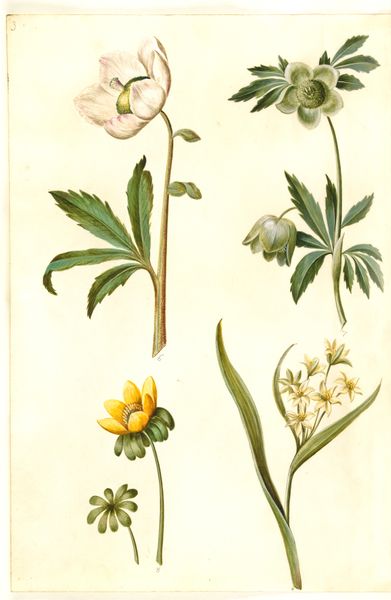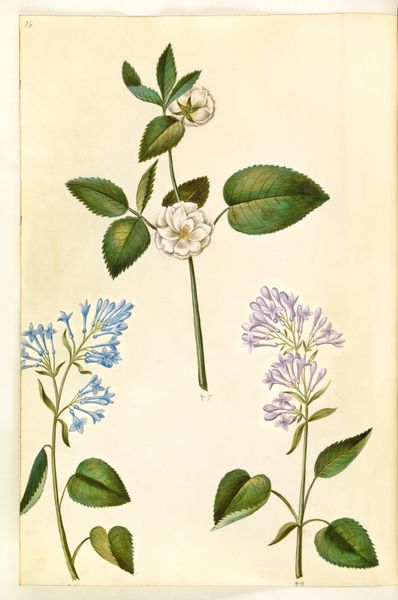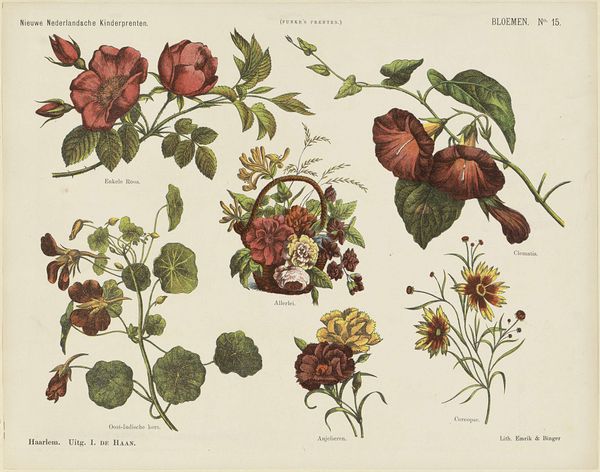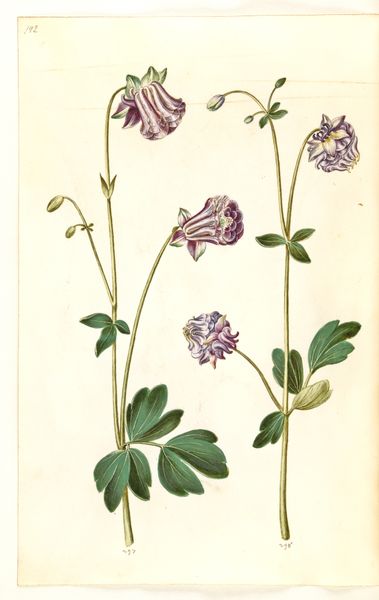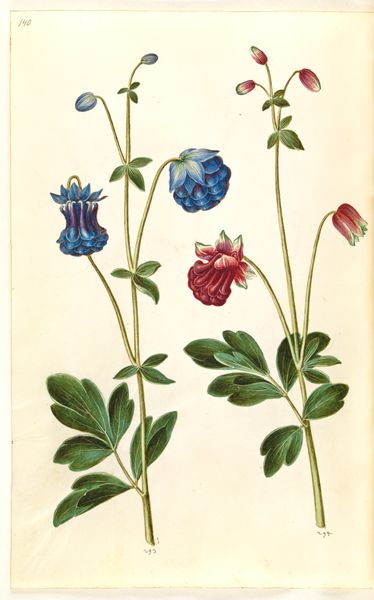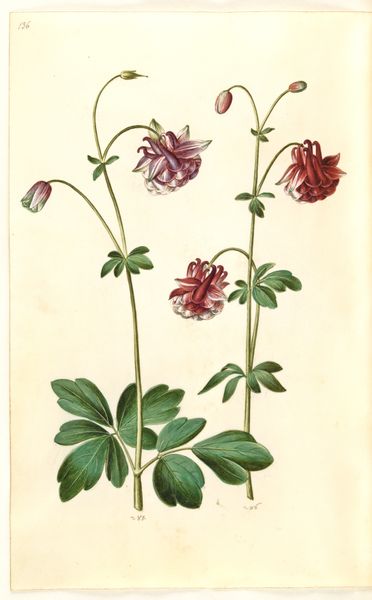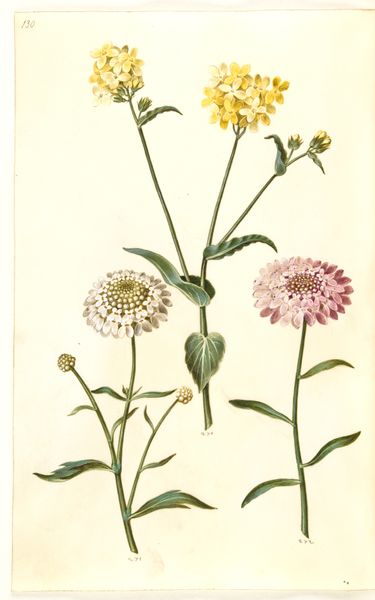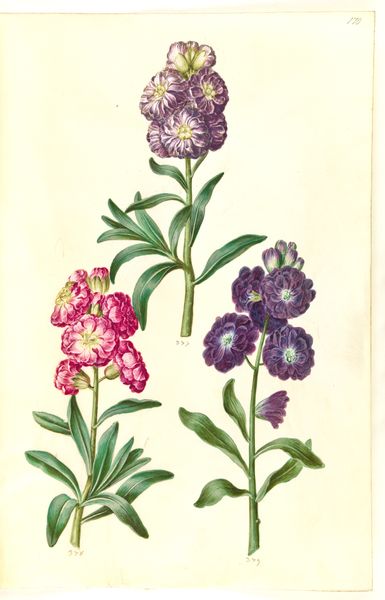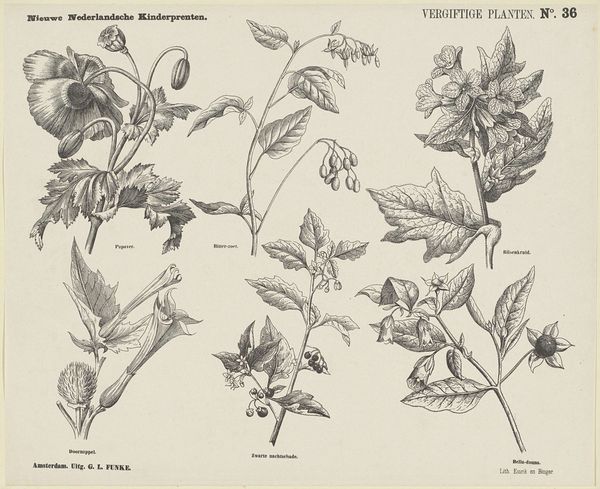
drawing, print, paper
#
drawing
# print
#
impressionism
#
landscape
#
flower
#
paper
#
folk-art
#
decorative-art
Dimensions: height 336 mm, width 430 mm
Copyright: Rijks Museum: Open Domain
Editor: This print, "Veldbloemen" or "Field Flowers", by Jan de Haan, sometime between 1875 and 1903, is so delicate! I'm really drawn to the way each little cluster is so meticulously rendered. How do you see this artwork fitting into the broader artistic landscape of its time? Curator: Well, let's think about the "Nieuwe Nederlandsche Kinderprenten" heading – New Dutch Children's Prints. This positions it within a specific social context: the rise of children's education and a burgeoning market for instructive, yet visually appealing, materials. How might this intention shape our interpretation? Editor: I suppose it's not just about aesthetics; it's meant to be educational too. So, were these prints actually used in schools? Curator: Potentially, yes. But more broadly, they speak to a cultural shift. The late 19th century saw an increased interest in botany, in the classification and understanding of the natural world. These prints are also connected with the decorative arts movement that blurred boundaries between fine art and functional design. What socio-economic group would consume them, and what aesthetic needs did these "Kinderprenten" satisfy? Editor: That's fascinating, thinking about who would actually have these. It almost feels like a very early infographic, presenting information in an accessible, beautiful format. Is it considered Impressionist because of the free brushwork or color handling? Curator: Though bearing certain aesthetic features of the Impressionist tendency, these prints fall into Decorative Arts due to the theme "folk art" and its use. By the way, this approach contrasts sharply with, say, scientific botanical illustration which demanded accuracy above all. Now how this work relates to today's cultural sensitivity for nature is a subject worth pondering about. Editor: So, understanding the cultural role gives this print much greater depth! Thanks. I had only perceived an illustration of flora, now it embodies how educational initiatives took place.
Comments
No comments
Be the first to comment and join the conversation on the ultimate creative platform.
